After a Christmas break involving much feasting and enjoyment, it’s time to get back to a bit of culture and reviewing. I’ve been having a look around at what’s going on in London, obviously it’s a much bigger beast than Malta so I’ve been picking and choosing what to go and see over the next few weeks.
I’ve lined up a mix of small and large, traditional and contemporary, and even a few excursions beyond the M25! To kick off though, we off to Kensington and the stunning, small house museum that is Leighton House. I do love a small house museum, there is something very personal about visiting a place that has been lived in by a well know figure, it makes you feel more directly connected to history, even if the person had only lived there for a few years, somehow you feel the traces.
Talking of which, Holland Park itself has a certain vibe, it’s currently a prohibitively expensive part of West London, but when first built, Kensington was a bit of an arty enclave, attracting many contemporary artists, the place is full of blue plaques! That’s not to say the residents weren’t wealthy but there’s a sense of ‘artyness’ about the place, it’s very leafy, and the houses are quite different individual, a number of artists from the Holland Park Circle built houses here with studios attached creating a particular atmosphere.
The entrance to the house is approached from the museum foyer next door, the first room is the original entrance hall, the guide tells us that the room was intentionally plain, as a contrast to the interior to come, although the large painting, Painting of a Doge with the Holy Trinity, and figures, c1594, from the studio of Tintoretto, probably gave a clue.
From here, you enter into the staircase hall which gives you an idea of the rich decoration that is to set become the theme of the house. It’s a riot of colour already, beautiful turquoise blues in the paint and tiles, as well as a deep mustard on the ceiling with gold embellishments recalling the contemporary interest in the Medieval of art movements such as Arts and Crafts, Aestheticism and the Pre-Raphaelites. I loved the stuffed peacock in here, it stands guard at the bottom of the stairs, this is a recent taxidermy but Leighton apparently had one in the same position. Peacocks seem to be emblematic of the Victorian period, as do their colours, you can almost see the inclusion here as bringing together the different aesthetic elements of the hall.

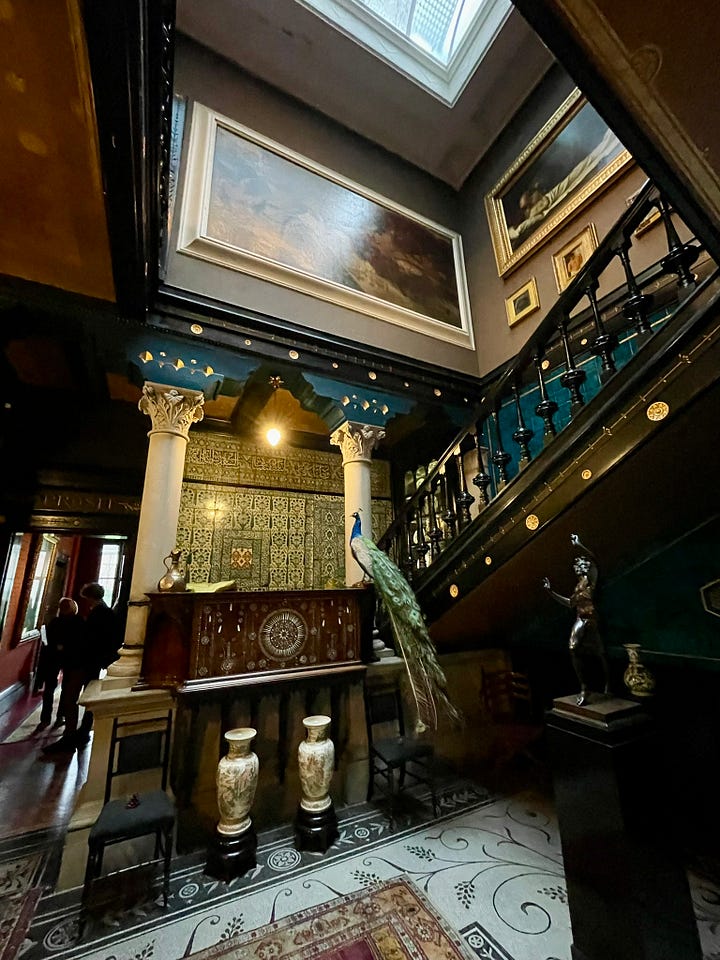
A swing to the left from the staircase brings us to the Narcissus Hall, the tiles in this hall continue the turquoise colour theme, they were made by and English potter William de Morgan, he was part of the Arts and Crafts movement. Originally, this would have been a room in itself and ended here, but, the addition of the extension to create the Arab Hall turns it into corridor which builds up the richness as you are led to the Arab Hall itself.
The Arab Hall is just stunning, it’s one of those awesome moments that leaves you open mouthed, all the more so because you know you’re standing in a redbrick house in the middle of London, not an Arabian Palace. The guide tells us that they were many influences on creating the Hall from Leighton’s travels to Europe, North Africa and the Middle East, he’d been to the Alhambra in Granada and I was definitely channelling my experiences of that palace here. From the outside you can appreciate the shape of the hall more, looking like an Islamic Minaret tower attached to the house.
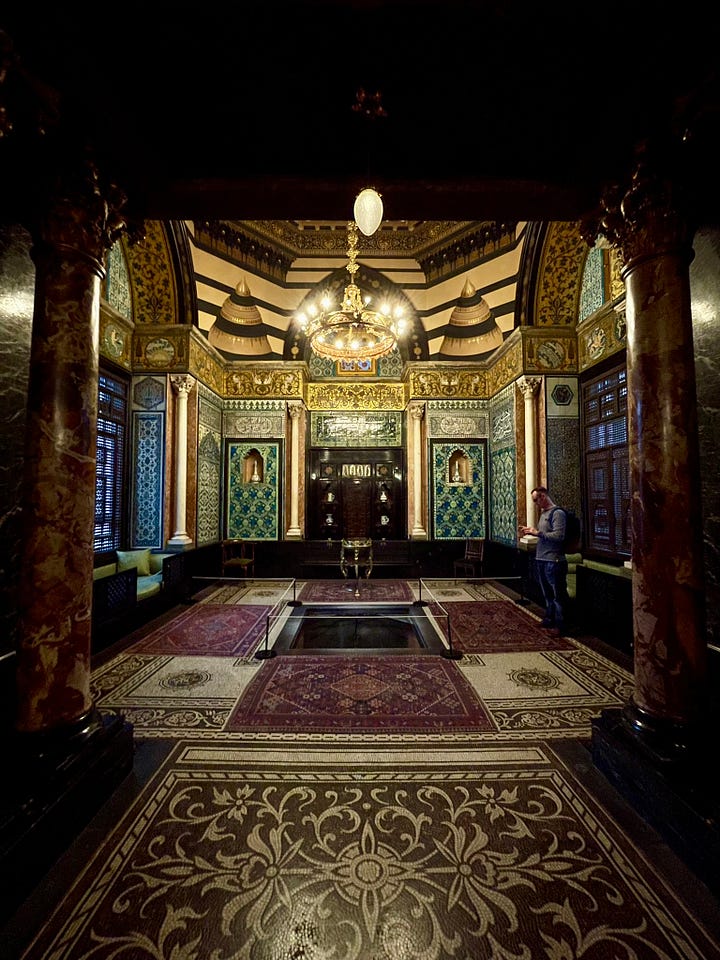

The tiles in the Arab Hall were the glory of Leighton’s collection, the guide tells us that they mainly come from Damascus and date to the 16th and 17th century. He did some of the collecting himself and also bought from others. The wooden screens replicate that idea of the hidden viewer looking out at the world, the seen and the unseen. That idea permeated into Maltese Baroque architecture as I recall, with the placing of the traditional wooden galleria over Italianate windows. This was reinforced for me by the wooden gallery that overlooks the hall from the first floor, but more of that later!

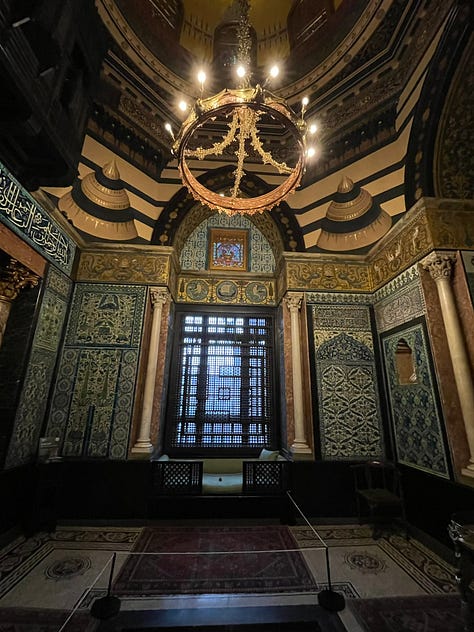
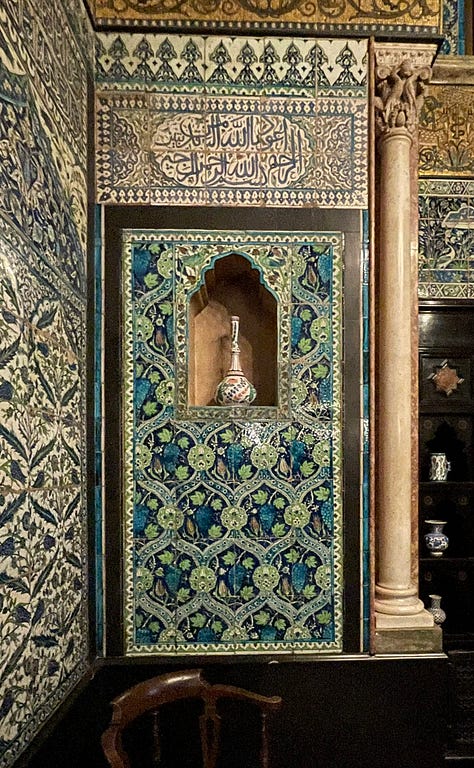
There are additional rooms on ground floor, the Dining Room, the Library and the Drawing Room but if I linger on those you’ll be reading this for hours, here’s a few pics though!
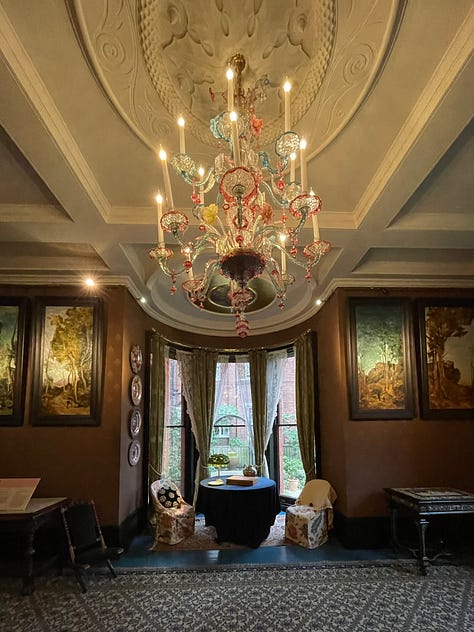
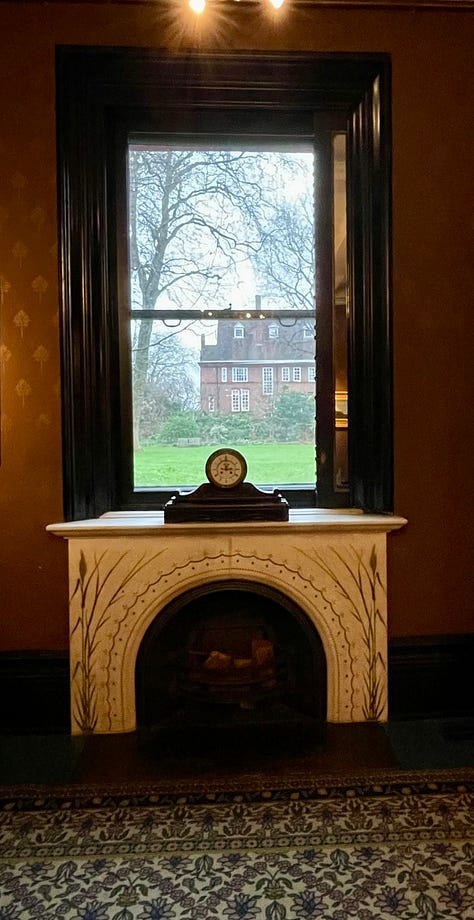
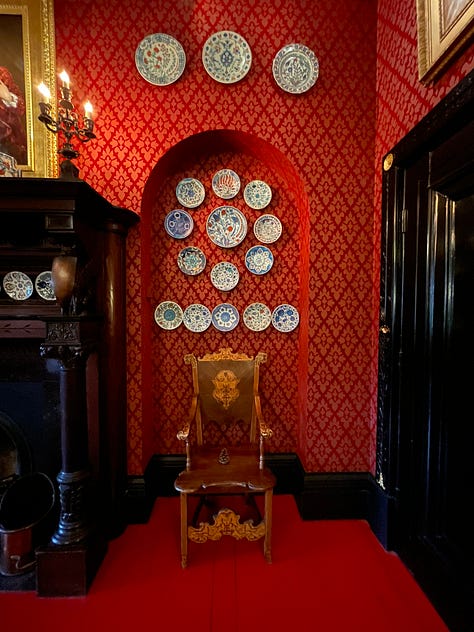
So, it was up the beautiful staircase to the next floor. With a change of floor comes a change of intimacy, the opulent receiving rooms on the ground floor seem to have clearly been for the public face of Sir Frederick Leighton, in the upper rooms we come into closer contact with Leighton the man, and the artist.
From the stairs you first arrive at an Antechamber, and here you find a small divan seating area which forms the wooden balcony that looks onto the Arab Hall below. So, not only do you have the Arab Hall but the secret space that allows for connection with the area below. It’s really quite interesting how this was joined into the Arab Hall, I suppose before the extension it may well have been a window and became a reworking of that.
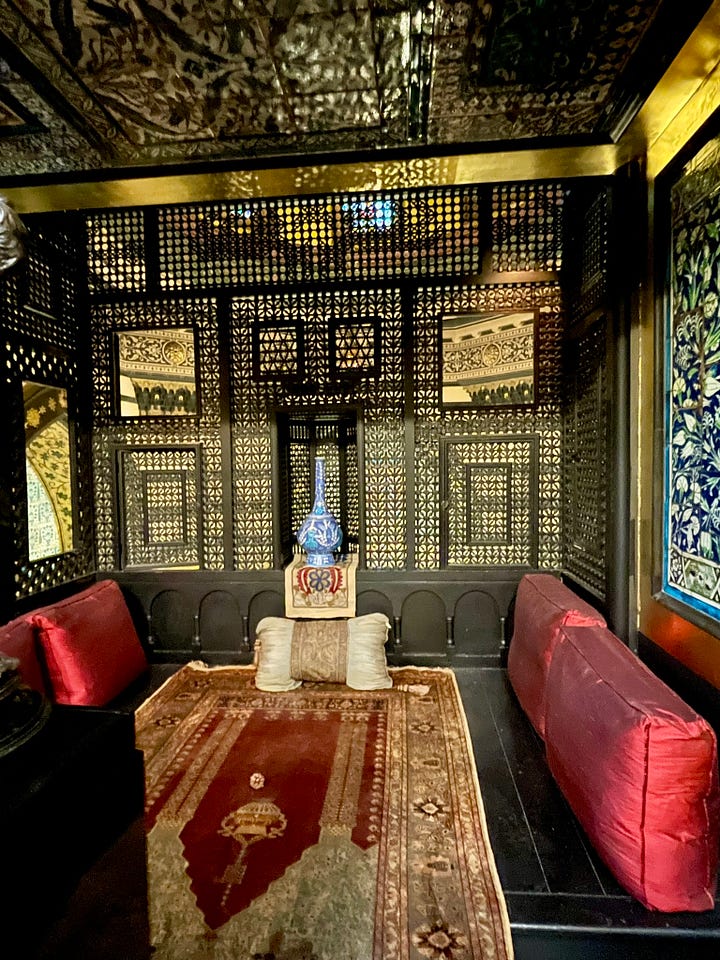
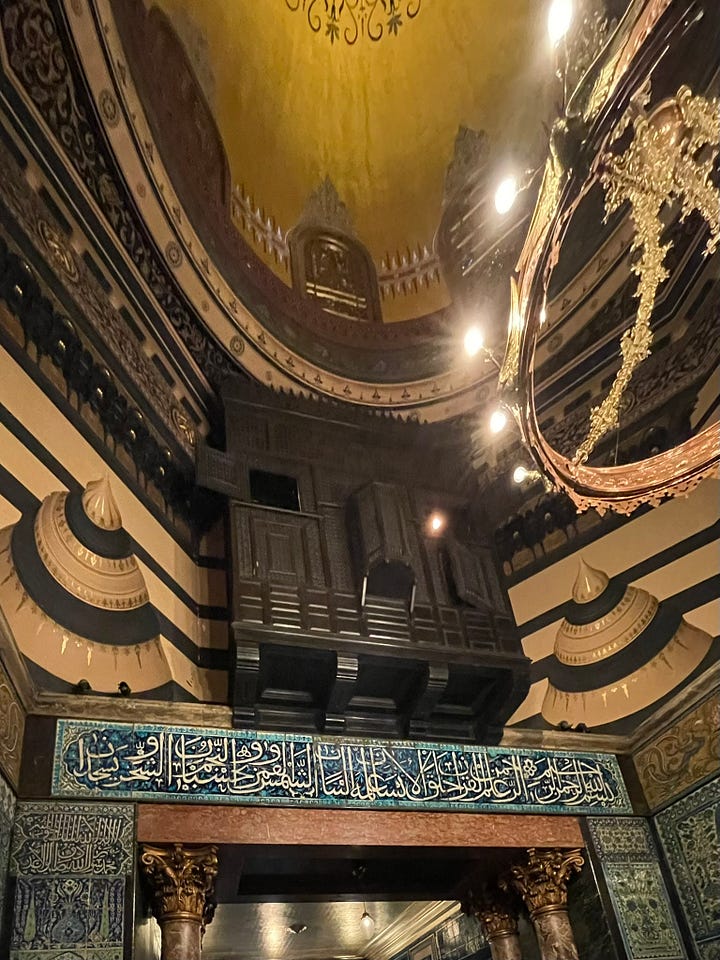
Through a short corridor you find the bedroom, Sir Frederick never married so there was no need for a suite of bedrooms for family. I found the bedroom the most intimate of the rooms, it still feels lived in somehow, and I suppose, quite ordinary, considering the rest of the house. You could easily imagine someone living a day-to-day life here.

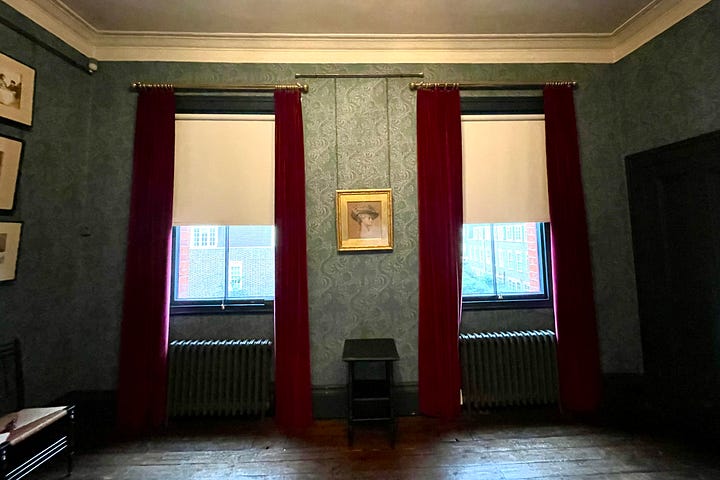
Back through the Antechamber, you find the Silk Room, this was used as a gallery, it’s quite opulent, I’m presuming the Silk refers to the wallpaper which seems to be made of silk. It feels like a relaxing, more intimate space, with lots of paintings to enjoy. I was taken by A Noble Lady of Venice, 1866, by Leighton himself. The rendering of the heavy brocaded shawl she wears is beautiful and for some reason, for me, it connects with the print of Bellini’s Portrait of Doge Leonardo Loredan, 1501, found in the bedroom, as well as the Tintoretto downstairs, it’s the head coverings and the brocade work that does it I think!

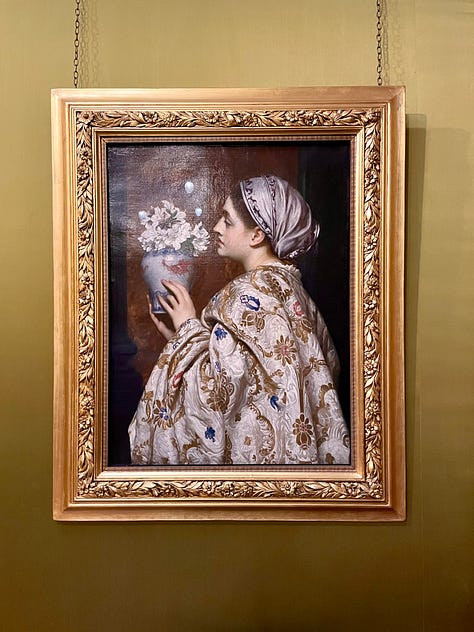

From here, you enter the main studio, it’s huge, and, unsurprisingly, filled with light. Having been designed as a bespoke studio I suppose the architect, George Aitchison, could really go for creating the perfect working space. The guide tells us it was the main area for working and showcasing Leighton’s work to friends and clients and was full of artworks. The windows are amazing, going right into the roof space, when you think of the Victorian period you tend to think of overstuffed, claustrophobic spaces, and yet this is pared back with large windows occupying a great deal of wall space. You can see it better from the outside, I took these pictures from the garden. You can see the scale of the windows and indeed the studio, compared to the rest of the house.
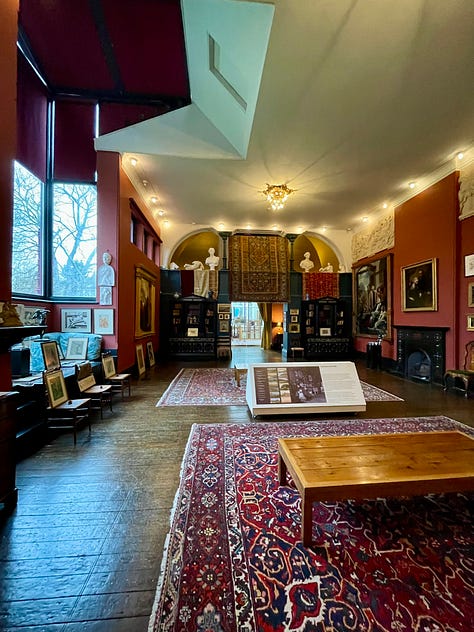
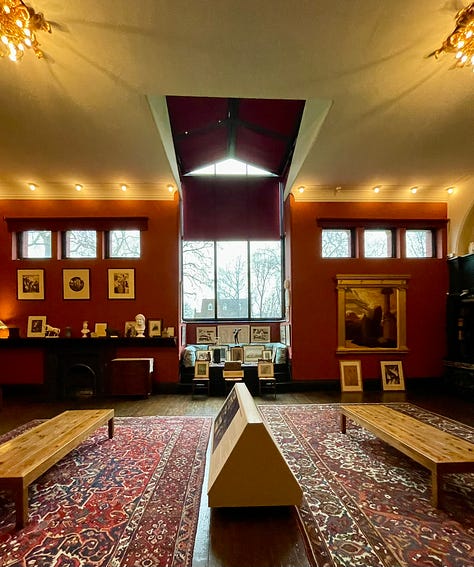

There are numerous artworks in here, I was interested in another of Leighton’s paintings, the large-scale, Death of Brunelleschi, 1852, it’s interesting that he chose the death of an artist for this piece. It follows Brunelleschi’s interest in perspective but, for me, seems very much Victorian in style. I like the scale and the details in the background of daily life in Florence, particularly the artist improbably poised painting a religious niche, it feels quite fanciful considering the drama of the foreground scene.


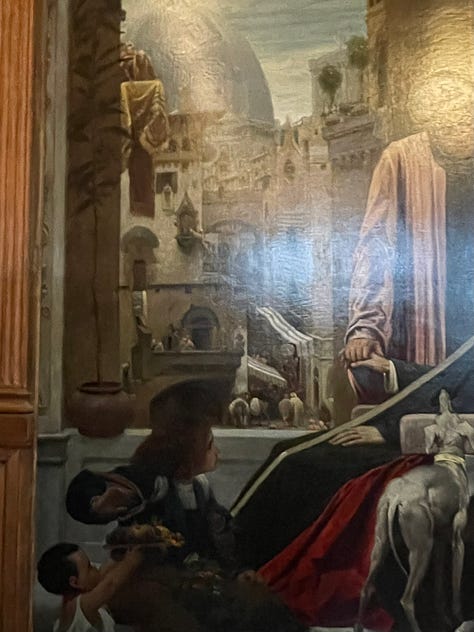
In addition to the main studio, Leighton had a Winter Studio built, this was to allow even more light in during the dark days of winter. It is indeed light as it’s essentially all glass, like an upstairs conservatory. There’s a selection of easels in here including one used by Leighton, a reproduction of his desk and the ever essential, in an English climate, cast iron heater.

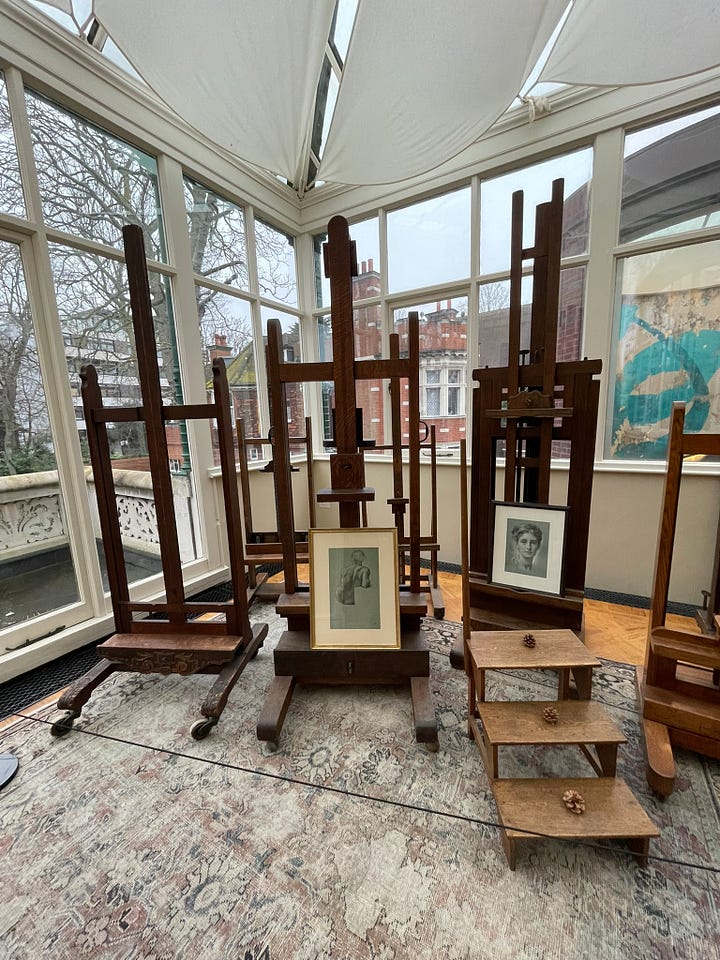
From here you can enter the Verey Exhibition Gallery, which houses an exhibition called – Leighton and Landscape. It’s a whole exhibition in itself so I can’t go into too much detail but it’s a fascinating focus on these quite small scale works. They are sketches so, inevitably, they contrast to his usual highly finished style but they feel more real somehow, Leighton was highly private in life so perhaps here we get a closer look at the artist. I will mention some of the last sketches he made, At Biskra and Old Biskra both 1895. He sketched these in Biskra, Algiers, the sketches are displayed with an original photograph from 1900 which allows for comparisons. You can see he’s working with the light and shadows and the reflections of the sky in the water from the photograph. They’re quite light sketches, you can see the brushstrokes, he made them outdoors much as the Impressionists were doing at the time, I wonder if he was moving that way?
I’ve gone on a bit haven’t I? It really is a stunning little museum to visit, it’s just that breath take of how contrasted the interior is to the exterior, not only physically but geographically, the house transports the viewer well beyond the English, Miss Marplesque, village of Holland Park to places unknown, through interior design and the collecting habits of Leighton.
That said, of course, it wouldn’t be balanced if I didn’t mention that there are also different narratives through which to view certain aspects of the house. For instance, is the Arab Hall Leighton’s homage to the beauty of places visited or would we now consider it to be cultural appropriation? Interestingly, Leighton House itself has opened the narrative in the video – Perspectives on the Arab Hall at Leighton House – worth a listen.
I highly recommend a visit, it’s free with an Art Pass and the café is also good, great, great cake! Well done if you reached this far, I’d appreciate any comments and thoughts in the comment box below.
Next week, we’re off to Tate Britain and Constable and Turner, who were apparently born within a year of each other!
Rita Fennell
Gallery Tart!




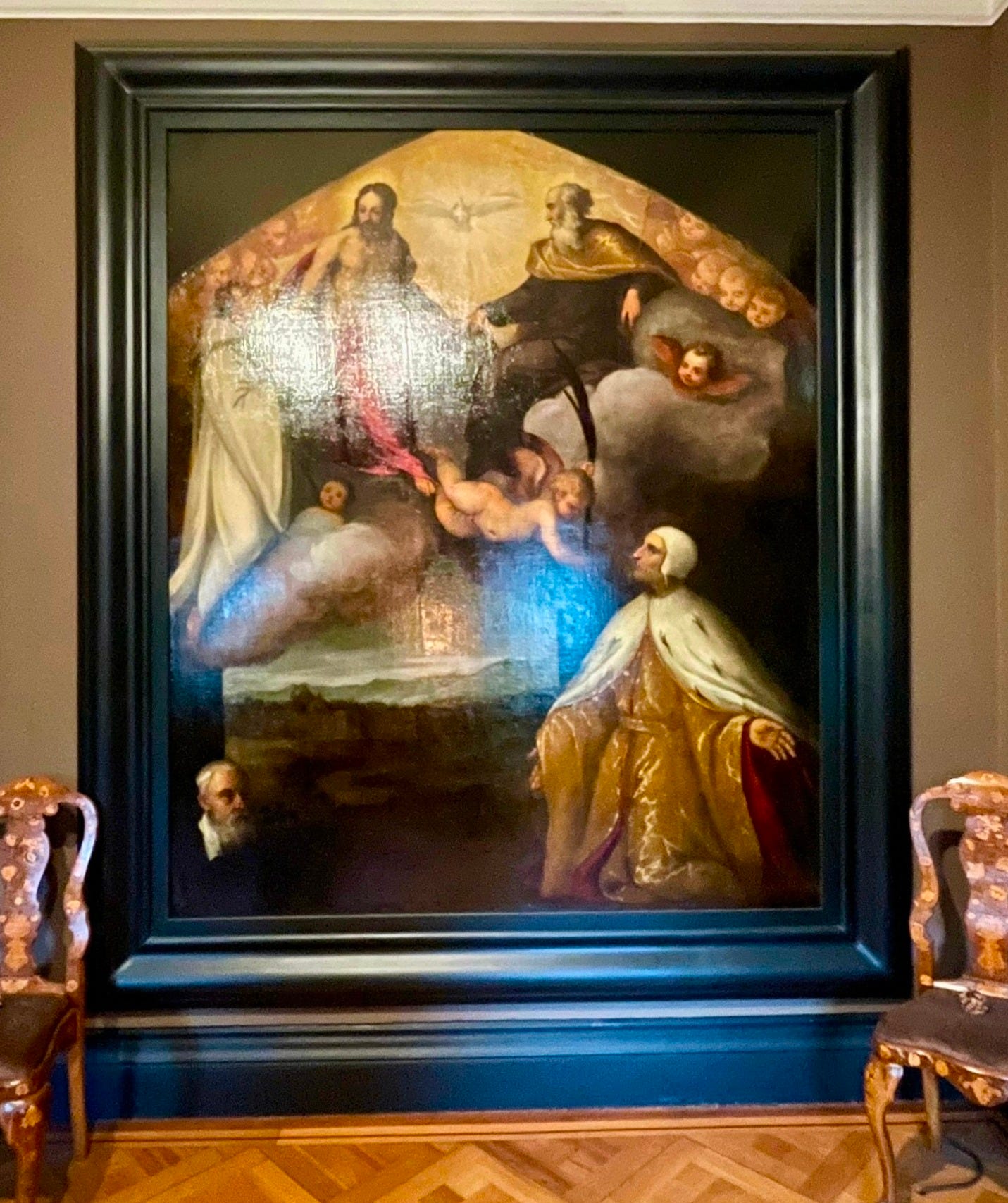




Leighton House was one of my favourite museums in London together with the Wallace Collection, thank you for this trip down memory lane!
You've convinced me. I'm putting Leighton House high on the list for my next visit to London.